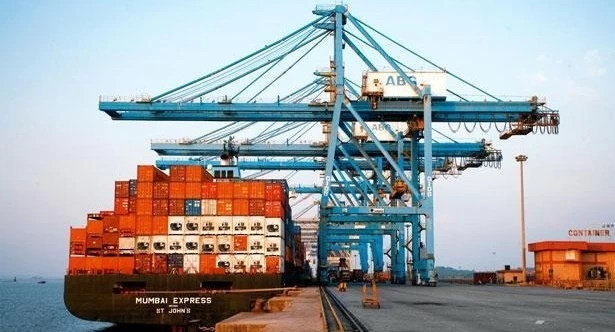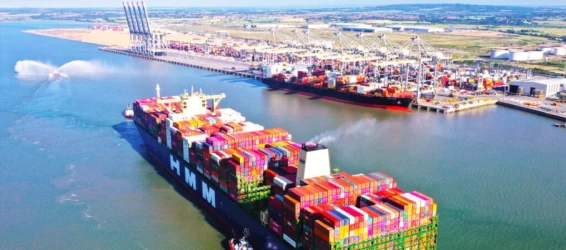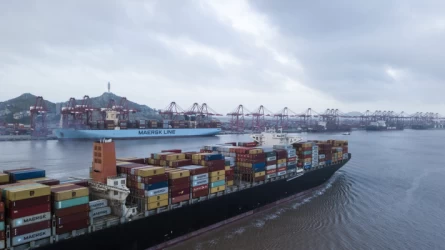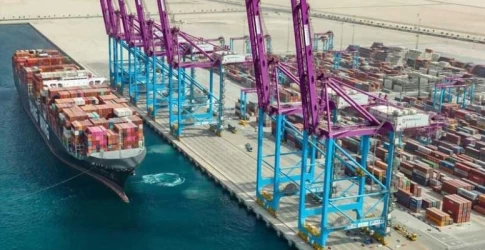Sea Freight in Mumbai Port
Mumbai Port, also known as Bombay Port, is one of the oldest and most significant ports in India. Located on the west coast of India, it serves as a crucial gateway for sea freight, connecting India to various international markets. The port’s strategic location and extensive infrastructure make it a vital hub for maritime trade.
Historical Background
Mumbai Port has a rich history dating back to the colonial era. Established in the 1870s, the port has played a pivotal role in the economic development of Mumbai and India as a whole. Initially developed by the British, the port has undergone numerous expansions and upgrades over the years to accommodate the growing demands of maritime trade.
Infrastructure and Facilities
Mumbai Port boasts a wide range of facilities to handle various types of cargo. The port has multiple docks, including the Prince’s Dock, Victoria Dock, and Indira Dock, each equipped with modern amenities to facilitate efficient cargo handling. The port also has specialized terminals for handling bulk cargo, liquid cargo, and containerized cargo.
- Docks and Berths: The port has 63 berths and 5 wharfs, providing ample space for vessels of different sizes.
- Container Terminals: While Mumbai Port primarily handles bulk cargo, it also has facilities for containerized cargo. Most container traffic is directed to the nearby Nhava Sheva Port (Jawaharlal Nehru Port), which is the largest container port in India.
- Warehousing and Storage: The port offers extensive warehousing and storage facilities, including open storage yards and covered warehouses, to accommodate various types of cargo.
Connectivity and Accessibility
Mumbai Port is well-connected to the hinterland through an extensive network of roads, railways, and pipelines. This connectivity ensures seamless transportation of goods to and from the port, enhancing its efficiency and reliability.
- Road Connectivity: The port is connected to major highways, facilitating easy movement of goods by road.
- Rail Connectivity: Mumbai Port has its own railway network, which is linked to the national railway grid, enabling efficient transportation of cargo by rail.
- Pipelines: The port has pipelines for the transportation of liquid cargo, such as petroleum products and chemicals.
Cargo Handling and Operations
Mumbai Port handles a diverse range of cargo, including dry bulk, liquid bulk, breakbulk, and containerized cargo. The port’s advanced cargo handling equipment and skilled workforce ensure efficient and safe handling of goods.
- Dry Bulk Cargo: The port handles commodities such as coal, iron ore, and fertilizers.
- Liquid Bulk Cargo: Petroleum products, chemicals, and edible oils are some of the liquid bulk cargo handled at the port.
- Breakbulk Cargo: This includes general cargo such as machinery, steel products, and project cargo.
- Containerized Cargo: Although most container traffic is directed to Nhava Sheva Port, Mumbai Port still handles a significant volume of containerized cargo.
Environmental and Safety Measures
Mumbai Port is committed to maintaining high standards of environmental protection and safety. The port has implemented various measures to minimize its environmental impact and ensure the safety of its operations.
- Pollution Control: The port has installed pollution control equipment and follows strict regulations to prevent air and water pollution.
- Safety Protocols: Comprehensive safety protocols are in place to ensure the safety of workers and cargo. Regular safety drills and training sessions are conducted to maintain high safety standards.
Future Developments
Mumbai Port is continuously evolving to meet the changing demands of maritime trade. Several development projects are underway to enhance the port’s capacity and efficiency.
- Expansion Projects: Plans are in place to expand the port’s infrastructure, including the construction of new berths and terminals.
- Technological Upgrades: The port is investing in advanced technology to improve cargo handling and operational efficiency.
- Sustainability Initiatives: Efforts are being made to adopt sustainable practices and reduce the port’s carbon footprint.
Conclusion
Mumbai Port remains a vital hub for sea freight in India, playing a crucial role in the country’s maritime trade. With its rich history, extensive infrastructure, and commitment to innovation and sustainability, the port is well-positioned to continue serving as a key gateway for international trade.
If you have any specific questions or need more details about Mumbai Port, feel free to ask!











